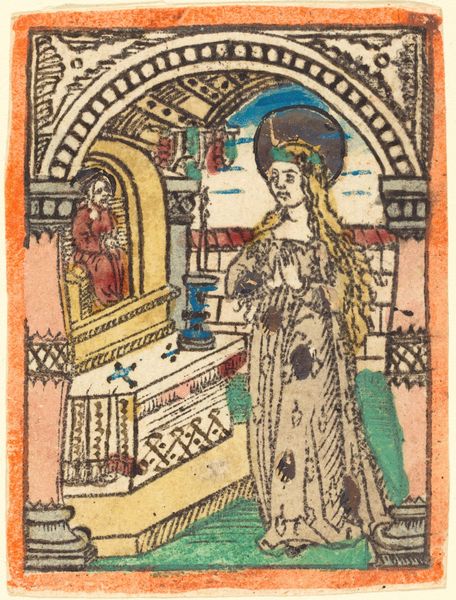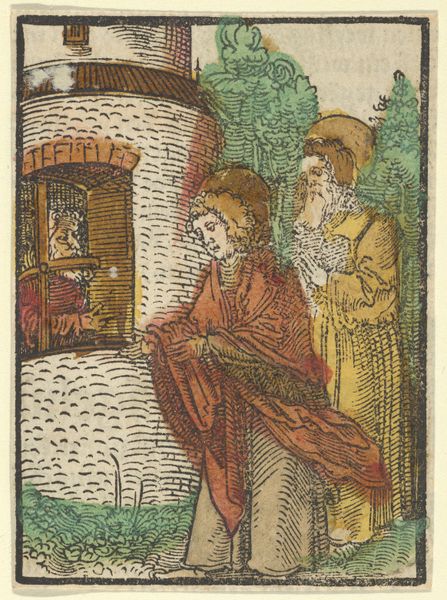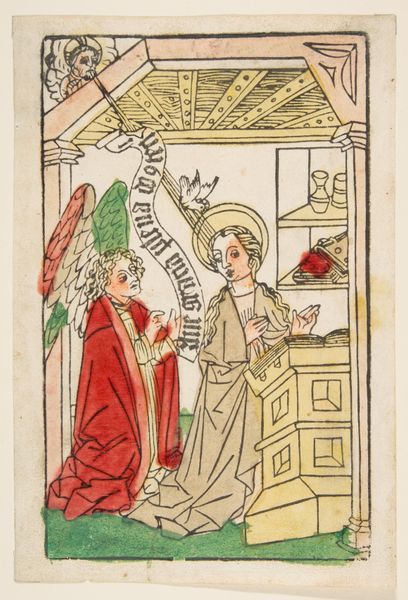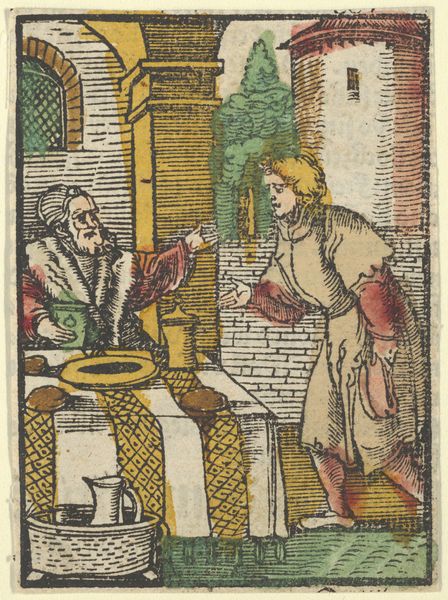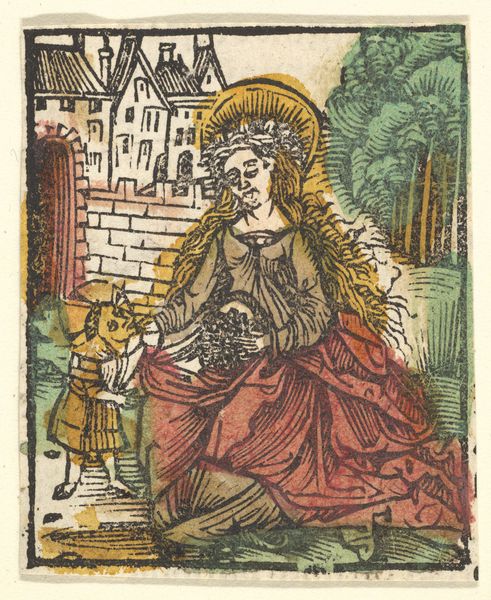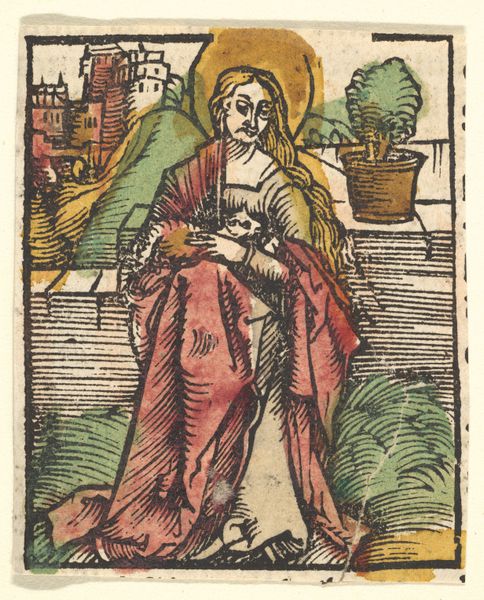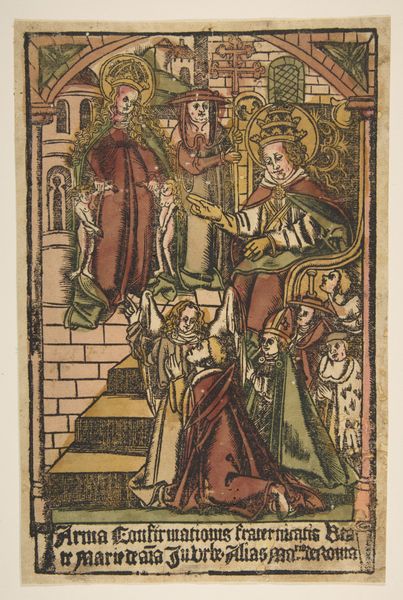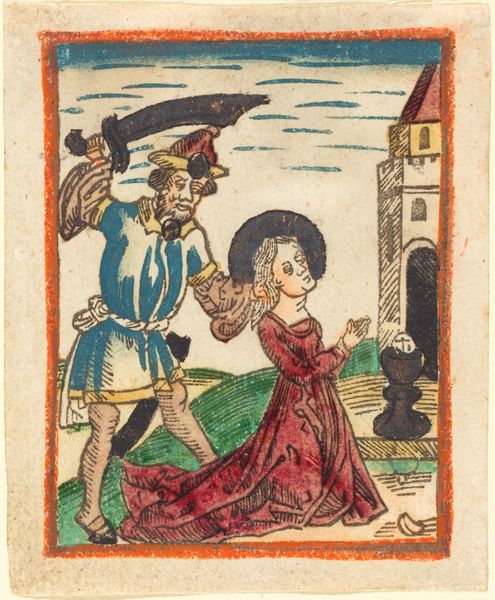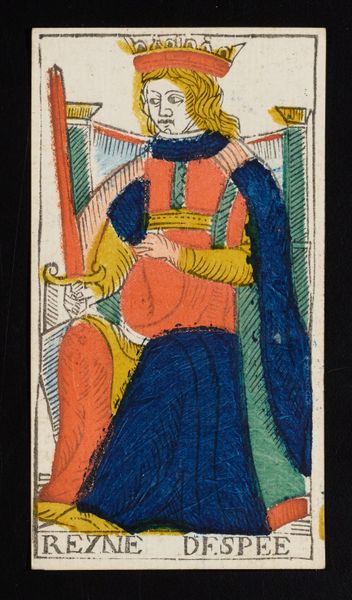
coloured-pencil, tempera, print
#
coloured-pencil
#
medieval
#
narrative-art
#
tempera
# print
#
figuration
#
coloured pencil
#
miniature
Dimensions: sheet: 8.5 x 6.6 cm (3 3/8 x 2 5/8 in.)
Copyright: National Gallery of Art: CC0 1.0
Curator: This piece, created around 1470-1480, is titled "The Virgin in a Robe Embroidered with Ears of Corn." The medium appears to be a combination of tempera and coloured pencil on what was likely intended as a print. Editor: It possesses such delicate simplicity. The colours are muted yet there's an arresting luminosity. It feels simultaneously ethereal and grounded, which speaks to the central mystery it seeks to portray. Curator: Indeed. Observe the meticulous detail given to the Virgin's robe. Those aren't simply decorative motifs; the ears of corn symbolize fertility, abundance, and, in a Christian context, the Eucharist. The corn symbolizes the bread from the body of Christ and God's eternal abundance for all. Editor: Note, too, how the composition directs our gaze. The architectural details, slightly awkward and not fully convincing as perspective, guide us towards her gesture of supplication, almost of surprised realization. Her face is averted, directing our vision again, upward towards what we can’t quite perceive in the little box of architectural space to her right. Curator: I think we also have to appreciate that as the corn is the primary decoration on the virgin's gown, then this tells us that perhaps our artists, though unnamed, placed importance on earthly means, agriculture and labor. It's not purely about celestial divinity; it's rooted in the material realities of the period, perhaps nodding to peasant craftsmanship with that raw, handmade quality that defines it. Editor: Perhaps the artist is creating a bridge between the untouchable divinity, made human via his humble and raw approach to rendering such holiness on paper? I keep returning to her hands, clasped so earnestly. They're the focal point, rendered with almost surprising anatomical detail for such a stylized piece. They imbue the scene with an undeniably human vulnerability. Curator: Ultimately, a close examination like this invites one to see artmaking itself as labour, with a perspective which incorporates the importance of economic sustenance for both the maker, and the image's receiver. It's quite moving. Editor: Indeed, the raw materiality combined with this quiet solemnity...it stays with you.
Comments
No comments
Be the first to comment and join the conversation on the ultimate creative platform.
